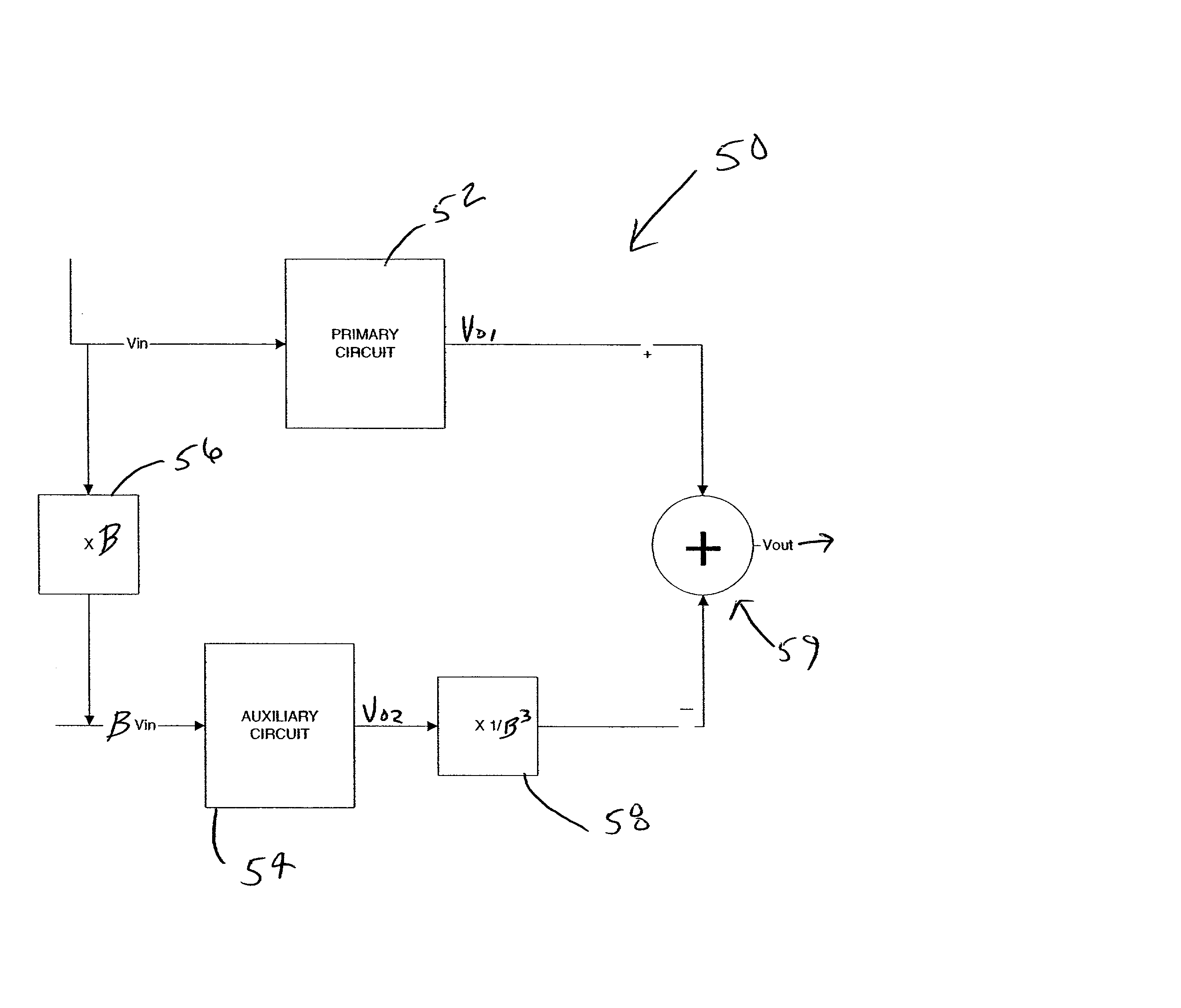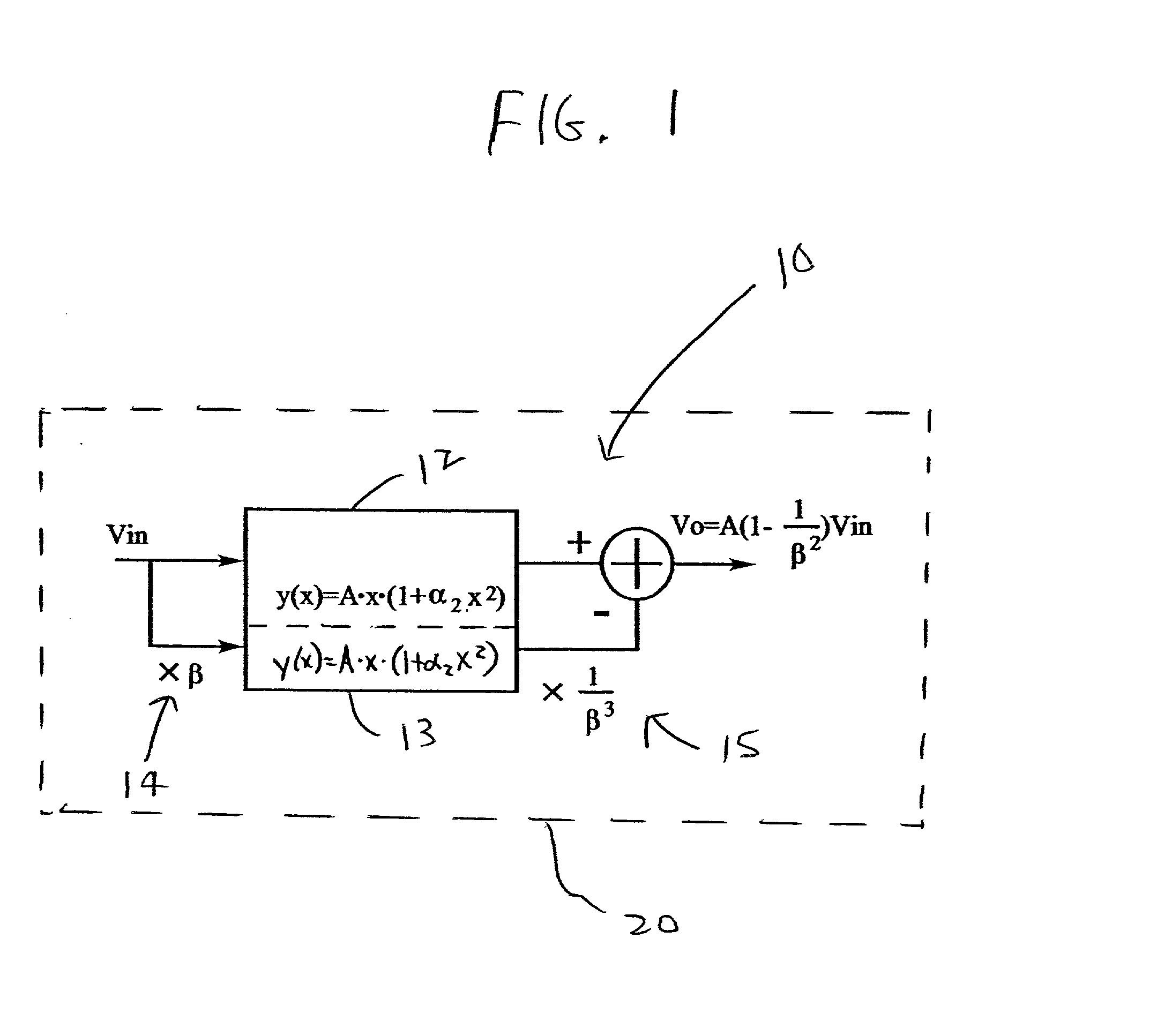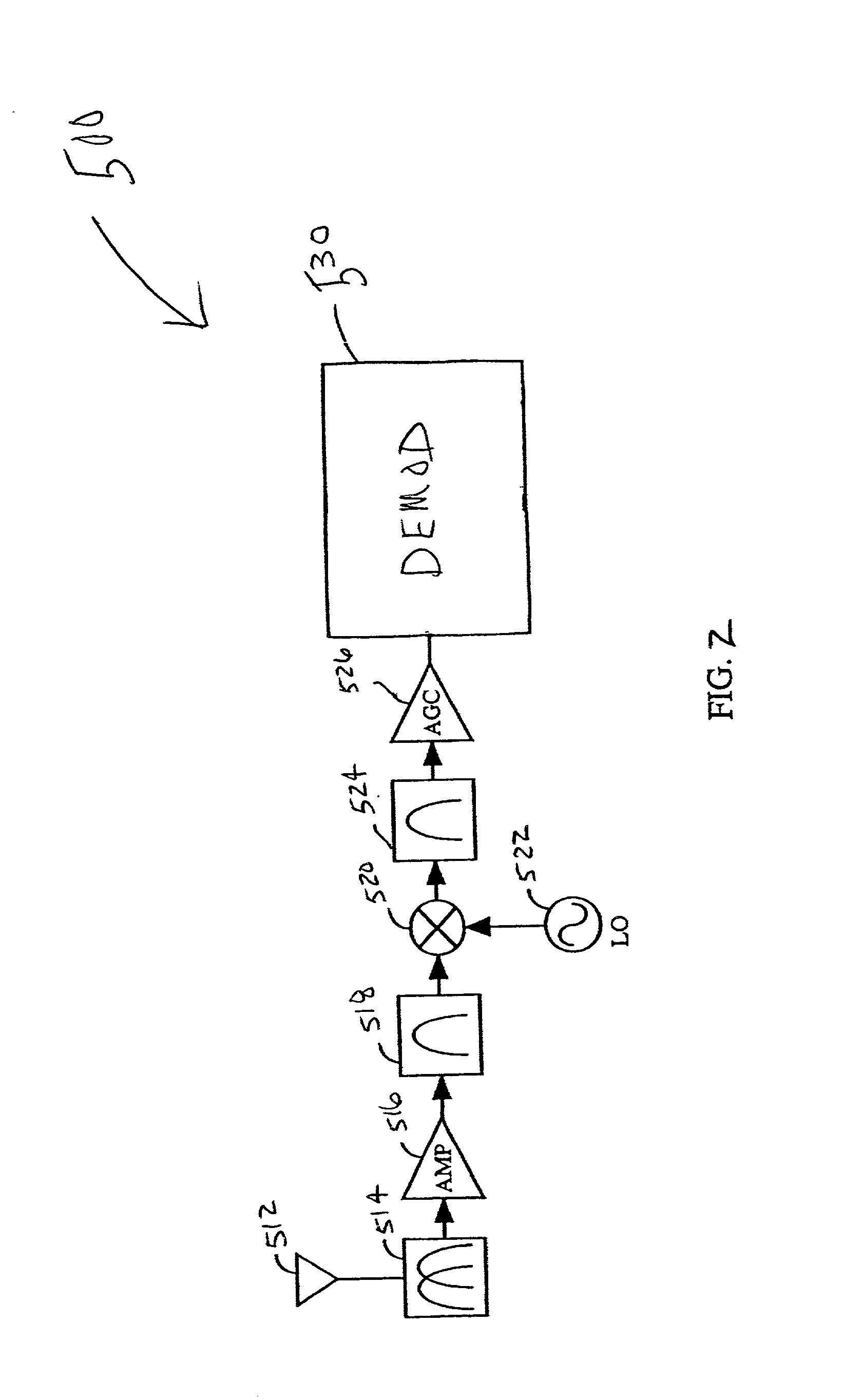High linearity circuits and methods regarding same
a high linearity, circuit technology, applied in the field of electric circuits, can solve the problems of low linearity, low linearity, and limited system accuracy, and achieve the effects of improving the linearity of cmos circuits, low noise, and high linearity
- Summary
- Abstract
- Description
- Claims
- Application Information
AI Technical Summary
Benefits of technology
Problems solved by technology
Method used
Image
Examples
Embodiment Construction
[0045] The present invention shall be generally described with reference to at least FIG. 1. Thereafter, various embodiments of the present invention and more details regarding such embodiments shall be provided and described with reference to FIGS. 2-12.
[0046] FIG. 1 shows generally a circuit apparatus 10 having high linearity according to the present invention used in a system 20. The circuit apparatus 10 employs a technique to provide high linearity.
[0047] Generally, the basic technique relies on canceling at least a portion, and preferably, substantially all of, the most significant harmonic from the output of a primary circuit 12 having an input V.sub.in provided thereto, e.g., the most significant harmonic typically being the 3.sup.rd harmonic. The nonlinear primary circuit 12 can be modeled as an imperfect linear, time-invariant (LTI) system with 3.sup.rd harmonic, as follows:
y(x)=A.multidot.x.multidot.(1+a.sub.2.multidot.x.sup.2)
[0048] Generally, an auxiliary input signal wh...
PUM
 Login to View More
Login to View More Abstract
Description
Claims
Application Information
 Login to View More
Login to View More - R&D
- Intellectual Property
- Life Sciences
- Materials
- Tech Scout
- Unparalleled Data Quality
- Higher Quality Content
- 60% Fewer Hallucinations
Browse by: Latest US Patents, China's latest patents, Technical Efficacy Thesaurus, Application Domain, Technology Topic, Popular Technical Reports.
© 2025 PatSnap. All rights reserved.Legal|Privacy policy|Modern Slavery Act Transparency Statement|Sitemap|About US| Contact US: help@patsnap.com



